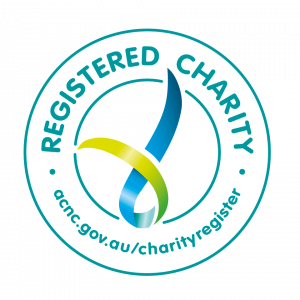
Gut Chronicles: The Story Behind Your Bub’s Gut Microbiome
The learning curve when we become parents is steep…super steep. Breastfeeding techniques, ideal nap times, safest car seats, how to hold them when you bathe them…To ‘dummy’, or not to ‘dummy’? Should we co-sleep? Is sleep training the only way?
The list of ‘things to learn about’ is endless…We ask the experts, we Google, and we talk with our friends…We study our baby’s behaviours, sleeping patterns and physical movements, and learn all about the developmental leaps they go through each month…
However, there’s one topic that often gets overlooked in all of this busyness…The development of your baby’s gut microbiome!
The evidence is clear…The health of our baby’s gut, and its microbial inhabitants is fundamental to many, many aspects of their health. The first few years of life, in particular, represent a window of opportunity to nurture a child’s microbiome. During these years, the child’s microbiome fluctuates greatly, shaped by the drastic shifts in its world, from birth, to breastmilk, to solids…
It does seem a bit strange then, that there’s such a lack of focus on educating parents as to how the gut microbiome develops, and the types of things that may impact the way in which it develops!
One group of Texan researchers set out to change this (1). By analysing 12,005 poo samples from 903 children, these researchers looked at and compared patterns in the development of the gut microbiome between 3 and 46 months of age (1). They noticed that there were 3 distinct phases of microbiome development in these early years – The developmental phase (3 – 14 months), a transitional phase (15 – 30 months), and a stable phase (31 – 46 months) (1).
3 Phases of Gut Microbiome Development
The Developmental Phase | The Transitional Phase | The Stable Phase | |
|---|---|---|---|
Age (Months) | 3 – 14 months | 15 – 30 months | 31 – 46 months |
Characterised by… |
| – Changes in diversity and significant alterations in two species – Proteobacteria and Bacteroidetes |
|
Gut Influencers
Whilst these scientists could recognise patterns and similarities in common across all the babies’ microbiome development, some factors made a clear difference to this evolution, when comparing microbiome to microbiome (1).
Breastfeeding – Whether a baby was breastfed during the ‘Developmental Phase’ (or not) made the biggest difference in gut microbiome composition (1). Breastfeeding, whether exclusively or alongside formula and/or solids, encourages an abundance of Bifidobacterium (1). This group of bacteria is famous for its foundational role in the early days of gut microbiome establishment, supporting immune development, and giving your baby the best chance for a healthy, disease-free life (2, 3). Once breastfeeding is stopped, the Firmicutes group of microbes starts to outnumber the Bifidobacteria (1).
Delivery mode – Whether a child was born via c-section or vaginally also impacted the development of these children’s gut microbiome, particularly in the developmental and transitional phases (1). Children who were born vaginally had higher levels of the Bacteroides bacteria (1). The Bacteroides species has many important beneficial roles for us humans, including protecting us from pathogens, and helping the other gut bugs absorb nutrients properly (4).
Other Factors – The location of home, whether or not they owned a furry pet, and if they had any siblings also made a clear difference in these kids’ gut microbiome development and composition (1).
Gut Knowledge
There is still much to be learnt about the gut microbiome and how its inhabitants may impact our health, but studies like this one can help us to understand the important transitions our baby’s gut bugs go through! Whilst the composition of each individual’s microbiome is as unique as their fingerprint, commonalities and patterns uncovered by studies such as this can help us better understand ways that we can help to equip our baby’s for a healthier and happier future.
References


This website and the information it contains is not intended as a substitute for professional consultation with a qualified practitioner.
© MothersBabies Ltd. View our Terms of Use & Privacy Policy
Search MothersBabies
Looking for something in particular? Find it here using our search query function. Simply type in your keyword and click the icon.
Recent Articles
Join Us